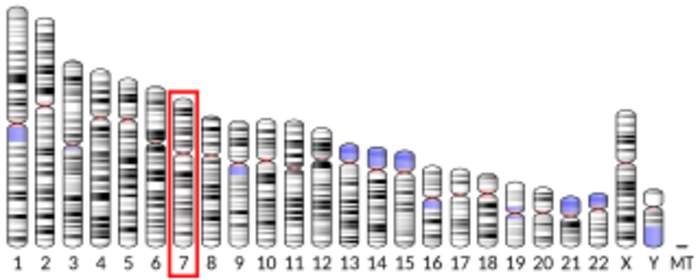 VGF
VGF or
VGF nerve growth factor inducible is a secreted protein and neuropeptide precursor that may play a role in regulating energy homeostasis, metabolism and synaptic plasticity. The protein was first discovered in 1985 by Levi
et al. in an experiment with PC12 cells and its name is non-acronymic. VGF gene encodes a precursor which is divided by proteolysis to polypeptides of different mass, which have a variety of functions, the best studied of which are the roles of TLQP-21 in the control of appetite and inflammation, and TLQP-62 as well as AQEE-30 in regulating depression-like behaviors and memory. The expression of VGF and VGF-derived peptides is detected in a subset of neurons in the central and peripheral nervous systems and specific populations of endocrine cells in the adenohypophysis, adrenal medulla, gastrointestinal tract, and pancreas. VGF expression is induced by NGF, CREB and BDNF and regulated by neurotrophin-3. Physical exercise significantly increases VGF expression in mice hippocampal tissue and upregulates a neurotrophic signaling cascade thought to underlie the action of antidepressants.

